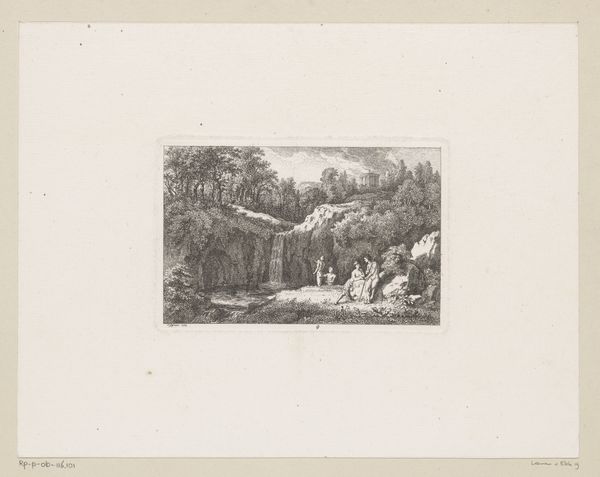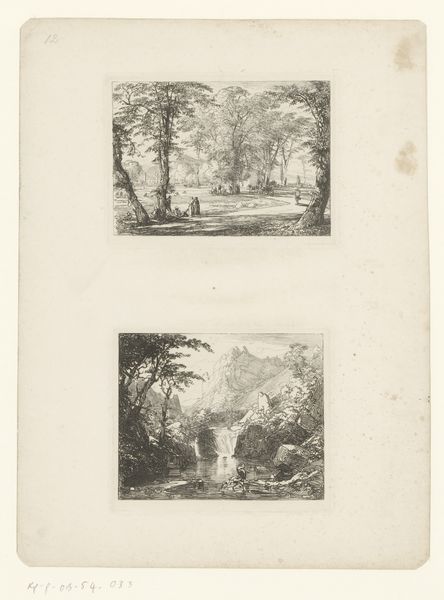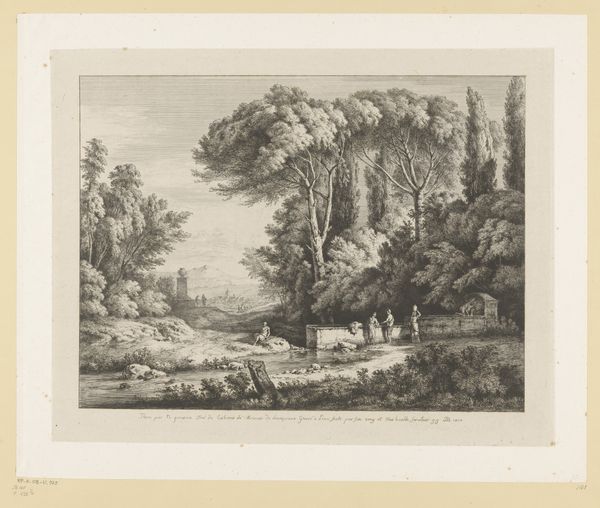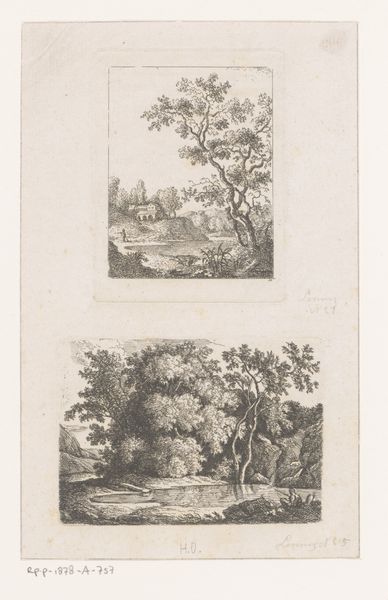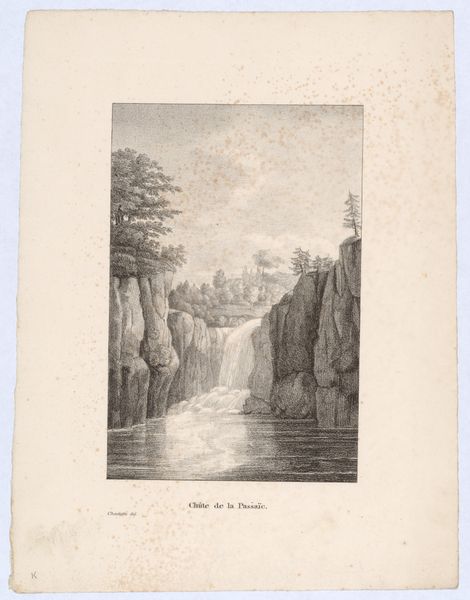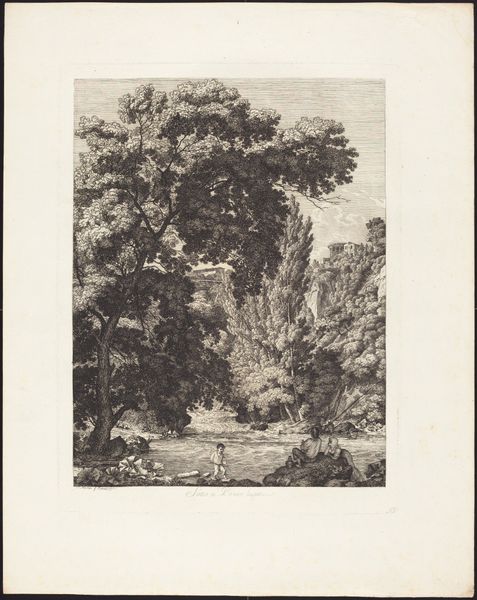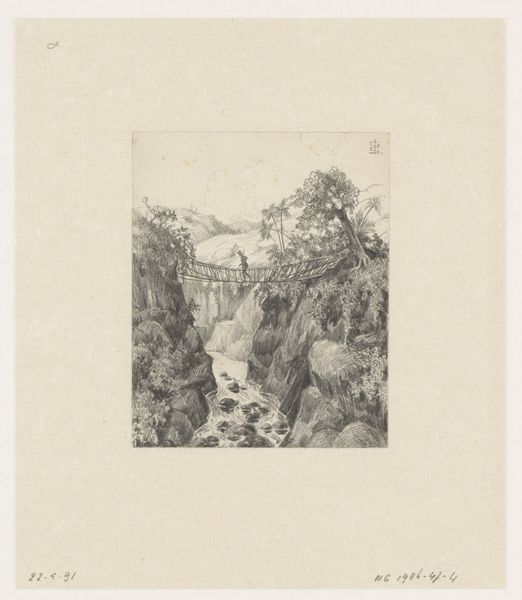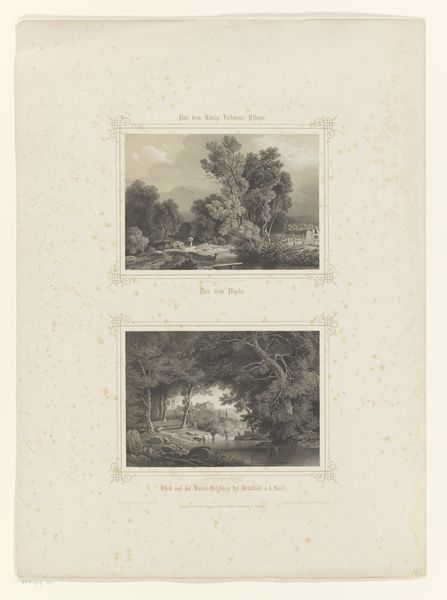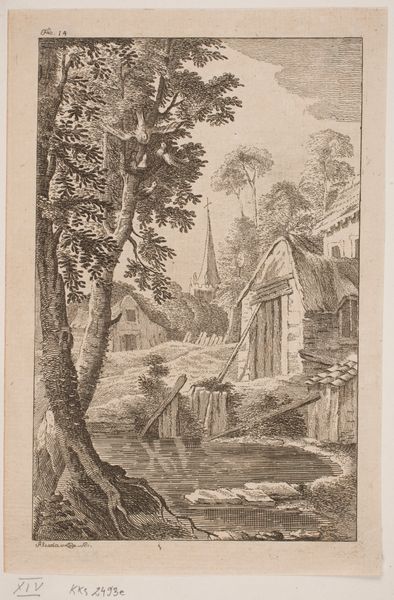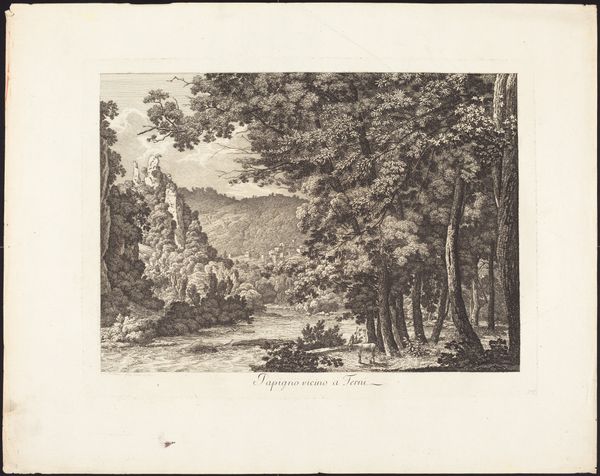
Vues d'Amerique: Près de Tuckerton; Chûte de West Canada Creek, près de Trenton, Oneida County; La Source à Schooley's Mountain 1821 - 1831
0:00
0:00
drawing, print, etching
#
drawing
# print
#
etching
#
landscape
#
academic-art
Dimensions: Plate: 8 3/8 × 4 3/8 in. (21.2 × 11.1 cm) Sheet: 8 11/16 × 4 1/2 in. (22 × 11.5 cm)
Copyright: Public Domain
Editor: Here we have “Vues d'Amerique” from between 1821 and 1831, an etching by Charlotte Bonaparte showcasing different American views. There is a stillness and orderliness to each vignette despite being depictions of nature. What strikes you most about this print? Curator: The stillness you observe speaks volumes about the era's perspective on landscape. Notice how the individual scenes are framed, almost like specimens under glass. Each is meticulously rendered. It reflects a desire to classify and understand the New World, doesn't it? Bonaparte’s background, exiled royalty with a claim to cultural legitimacy, frames this imagery of America for an old-world audience through an ordered composition that carries more political implications than initially meets the eye. The scenes she’s chosen represent a cultural appropriation of America’s resources for economic purposes, yet is viewed through the ordered sensibility of one brought up in an elite court. The etching medium further enhances that feel. It speaks to controlled reproduction. Editor: So the print is less about untouched nature, and more about establishing a particular understanding, maybe even control, over it? Curator: Precisely. Consider the cultural weight carried by the image of the waterfall. Historically, water symbolized purity and renewal. But here, rendered through this detached lens, the focus is diverted from its intrinsic power to the concept of America as something available, something to possess, for those who "cultivate" it. Does this prompt you to reconsider the scene at Tuckerton, then? Editor: It does. The small building no longer feels like just a detail of local life but signals development, ownership...an imprint. I initially saw quiet scenes of nature, but it’s a statement of claiming land, subtly framed by the artist's own cultural context. Curator: And now you perceive the resonance between the imagery, its symbolism, and its sociopolitical context! Editor: Definitely! I’m seeing these landscapes with completely different eyes now, thinking about how visual choices shape our understanding of both the artwork and the world.
Comments
No comments
Be the first to comment and join the conversation on the ultimate creative platform.
